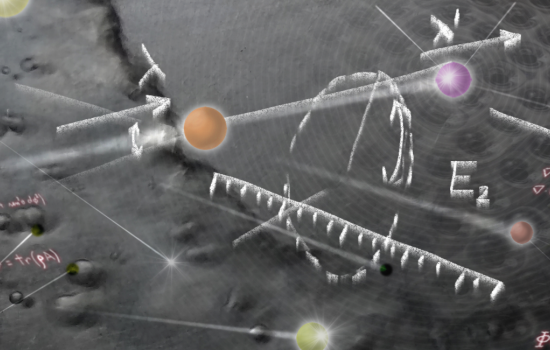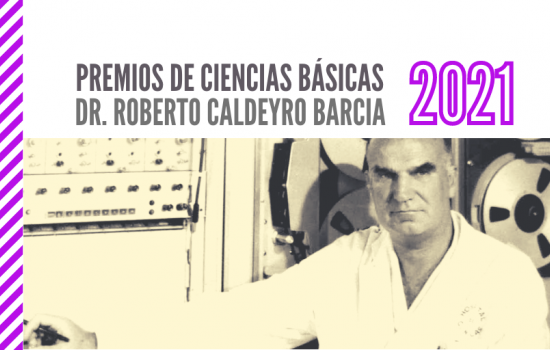"Investigation of sound localization of anurans with in-vivo holographic vibrometry and numerical modeling", Prof. Pascal Picart (Le Mans Université)

Share:
Seminar Details:
- Date: Monday, November 25th
- Time: 2:00 PM
- Location: Physics Institute, Facultad de Ingeniería
Bio: Pascal Picart is Professor at Le Mans Université, France. He authored/co-authored 115 journal papers, 27 invited talks, 162 proceedings in international & national conferences, 7 book chapters, coordinated 4 books and co-founded one start-up. His research topics are connected with coherent imaging based on digital holography and its various applications to acoustics, mechanics and fluid mechanics.
Title:
Investigation of sound localization of anurans with in-vivo holographic vibrometry and numerical modeling
Abstract:
Anurans are considered as the most vocal of vertebrates. Indeed, they use acoustic communication in many behavioral contexts, even in their reproduction process [1]. In the process of acoustic communication, sound localization is an important part and was studied for mammal species. In the duplex theory of Lord Rayleigh, in the horizontal plane sound localization relies on binaural cues that are, the inter-aural time difference (ITD), and the interaural level difference (ILD) [2]. In the vertical plane, sound localization is made possible by monaural cues derived from the diffraction of sound by the individual's external anatomy. From the point of view of frequency and size, most species have dominant frequencies of a few thousand hertz [3] and small size from around 10 mm to 320 mm. So, it follows that sound localization should be impossible for animals with small heads and hearing frequency range below 10 kHz. However, anurans break this physical prerequisite because they localize sound with great accuracy in the audible human range. It turns out that understanding the directionality of anuran amphibian hearing is a formidable scientific challenge. Some fundamental mechanisms of hearing remain partially or totally uncertain. This may be due to the fact that our understanding of vertebrate sound localization is based largely, 1) on studies of mammals (mainly humans) and archosaurs, and 2) on the multiple ways in which sound can reach the inner ear, including tympanic and extra-tympanic pathways (e.g. lungs, oral cavity, nostrils). The duplex theory of Rayleigh reaches its limits in frogs (broadly defined), due to the small size of these animals in relation to the wavelengths of the sounds produced for communication. Unfortunately, the ear structures involved are difficult to access, and direct observation of the ear from the outside or inside is impossible. In this paper, we aim at reporting our contribution to this topic.
In general, most of the methods currently used to observe the ear are invasive and destructive, and in some cases may even alter the mechano-acoustic response of these structures. The authors decided to follow a methodological breakthrough for the study of anuran hearing by considering, on one hand, innovative imaging methods combined with numerical modeling to provide a non-invasive understanding of these hearing structures. In this paper, we focus on holographic imaging and we present an achiral digital Fresnel holography set-up able to measure the tympanic membrane vibration on both sides of the head of in-vivo anurans submitted to acoustic excitation in the range of 1000Hz-5000Hz. A dedicated acoustic antenna was built with 24 loudspeakers organized around 360° and three angles of elevation, 0°, 30° and 45°. The in vivo specimen is located in the central part of an achiral holographic set-up with two high-speed cameras and a microphone record the excitation emission of the animal. Electronic synchronization is provided to launch the acoustic emission sequence whereas recording on both cameras the sequences of digital holograms. Once processed the acoustic emission yields the exact excitation frequency and amplitude The time-sequences of digital holograms are processed to yield the optical phase variations [4]. The frequencies are considered as input of an inverse problem leading to the accurate estimation of the amplitude and phase of the tympanic vibration of the in-vivo anuran. We present the first experimental results with specimen Pelphylax lessonae and Xenophrys aceras and related interpretations of observations ved.
1. H.C. Gerhardt, Phonotaxis in Female Frogs and Toads: Execution and Design of Experiments. In Methods in Comparative Psychoacoustics (eds G.M. KLUMP, R.J. DOOLING, R.R. FAY & W.C. STEBBINS), pp. 209–220, Birkhäuser Basel, Basel (1995).
2. Lord Rayleigh, On Our Perception of the Direction of a Source of Sound, Proceedings of the Musical Association 2, 75–84 (1875)
3. R. Boistel, Study of the auditory apparatus of anurans without middle ears: implications for acoustic communication, pp. 1–264, PhD thesis, Université Paris Sud, Orsay (2007).
4. E. Meteyer, S. Montresor, F. Foucart, J. Le Meur, K. Heggarty, C. Pezerat, and P. Picart, Lock-in vibration retrieval based on high-speed full-field coherent imaging, Sci. Rep. 11(1), 7026–7040 (2021).



